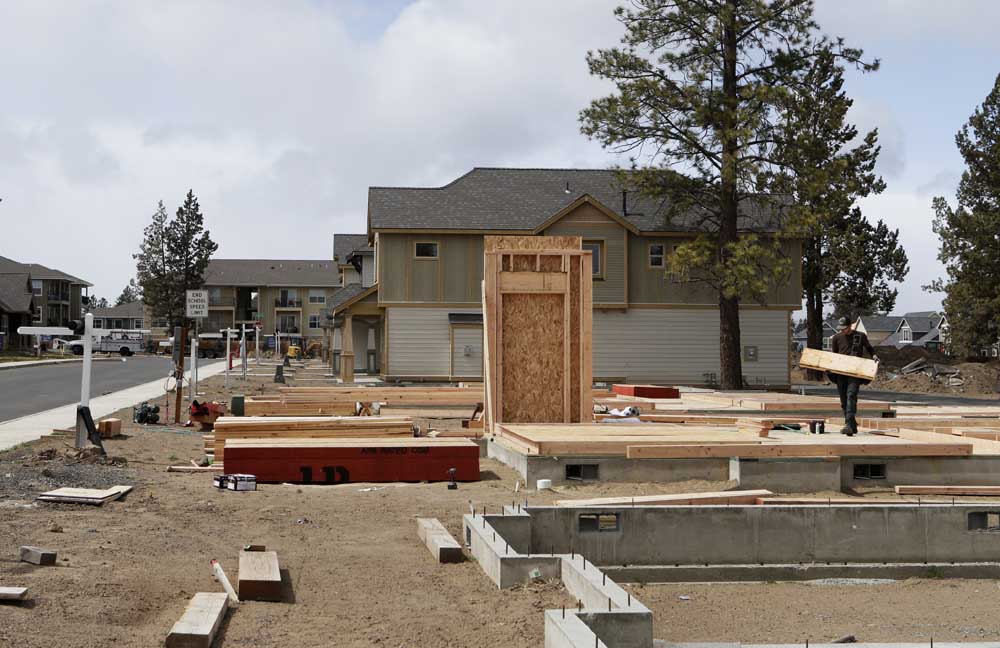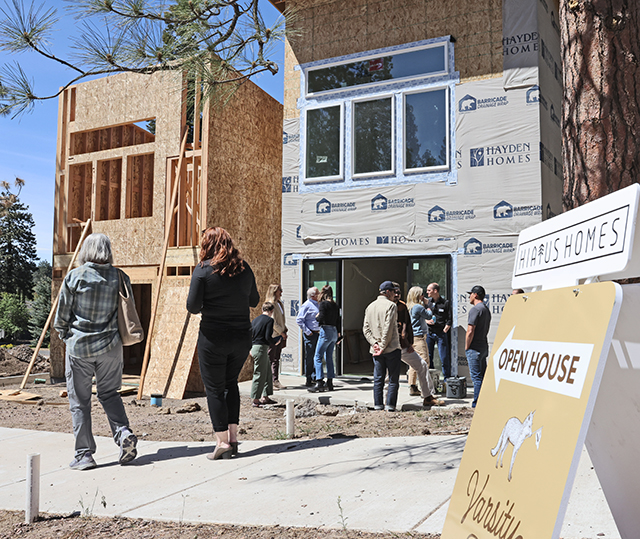Deschutes County again listed among fastest-growing in nation
Published 12:00 am Monday, April 16, 2018

- Construction continues on homes in southeast Bend on Thursday. While Bend and all of Deschutes County continue to grow, the U.S. Census Bureau noted it’s not as fast as in the past.(Joe Kline/Bulletin photo)
D eschutes County remains one of the fastest-growing areas in the nation, but new U.S. Census Bureau data show its growth slightly stalled last year.
The county dropped from third to fourth on the latest list of fastest-growing metropolitan areas across the country. The list compiled by the Census Bureau tracks the fastest percentage increase, not the actual population number.
Between July 1, 2016, and July 1, 2017, the county’s population grew 3.4 percent from an estimated 180,675 to 186,875, according to the Census Bureau.
The year before, Deschutes County grew 3.6 percent, the third-fastest-growing area nationally.
Now the county ranks behind St. George, Utah; the Myrtle Beach area in South and North Carolina; and Greeley, Colorado.
On the same Census Bureau report, Crook County is represented on the list of fastest-growing “micropolitan areas” — communities with a population between 10,000 and 50,000.
The list names Prineville as the fourth-fastest-growing micropolitan area behind Heber, Utah; Jefferson, Georgia; and Bozeman, Montana. From July 1, 2016, to July 1, 2017, Prineville’s population grew 3.5 percent, from 22,344 to 23,123, according to the Census Bureau.
The census report notes migration is the driving factor behind the population increases in the region.
Later this year, the Census Bureau will release its 2017 population estimates for cities and towns. Bend ranked sixth among the nation’s fastest-growing cities with populations of 50,000 or more in 2016 with an estimated population of 91,112.
City officials in Central Oregon are becoming used to seeing their communities listed on national reports, especially with the rising number of building permits and housing developments they see each year.
Bend Assistant City Manager Jon Skidmore said the city has addressed the population growth in various ways.
That includes the urban growth boundary expansion in 2016, and work being done on a major sewer infrastructure project. In addition, the city keeps identifying roadways to upgrade.
“We haven’t been under the delusion that growth is all of a sudden going to slow down,” Skidmore said. “Our planning efforts and infrastructure efforts all focus on that continued growth.”
One metric that clearly shows the growth in Bend is the rising number of new dwellings approved in the city.
In 2014, the city approved 410 building permits for single and multifamily units. That number increased to 1,447 in 2017, according to the city.
In Prineville, City Manager Steve Forrester said the city saw a boom in the early 2000s before the Great Recession, when land was being plotted and planned for subdivisions. That land sat empty, but is now being developed, Forrester said.
“All that land was still in play as we came out of the recession,” Forrester said. “An inventory of developed properties has helped fast track some homebuilding.”
The number of approved single-family and multifamily dwellings in Prineville has skyrocketed in the past five years. Approved dwellings went from 16 in 2013 to 95 in 2017. Already this year, the city has approved 34 housing units. Forrester also credits much of the city’s growth to a collection of companies that provide stable jobs, including Les Schwab, the Apple and Facebook data centers and Fontana Wood Products.
“There’s a little bit of a renaissance in Prineville,” Forrester said. “It’s an interesting point in history. Things are just in a very positive mode.”
— Reporter: 541-617-7820, kspurr@bendbulletin.com






